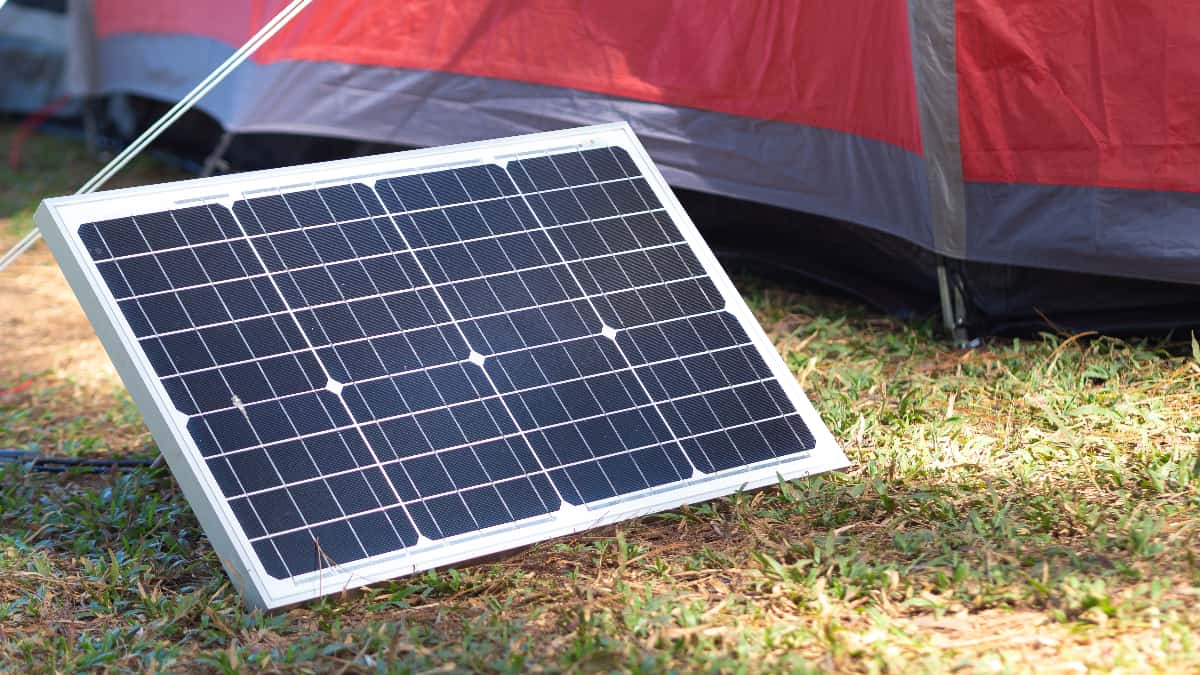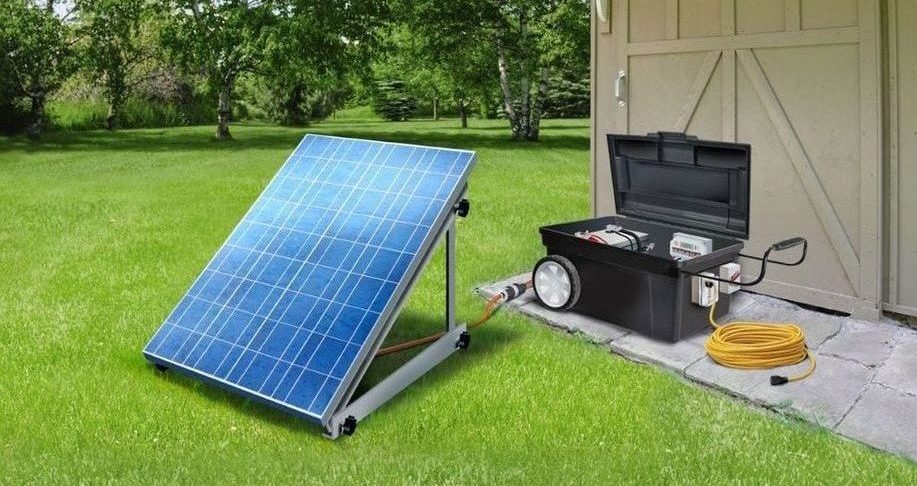When to Replace Portable Solar Modules
Replace portable solar modules when EL testing detects >30% defects, power output drops below 85W (15% loss from 100W rating), or physical damage exceeds 2mm cracks/3cm bulges. Use thermal scans showing >8℃ hotspots or IV curve tests revealing <72% fill factor. Replace connectors if contact resistance exceeds 5mΩ. Perform quarterly IV tests for early detection.
Power Generation Alarm
Last month, a 5MW distributed power plant in Zhejiang suddenly experienced a 23% daily power generation drop, nearly causing the operation team to lose 15% of their performance pay. The problem originated from 12 portable solar modules - EL tester showed black spots larger than wok bottoms. Engineer Liu from TÜV certification (8 years specializing in outdoor PV systems) climbed the roof with thermal imager and found maximum 18℃ temperature difference in Sub-array 3, like frying steak with half burnt and half raw.
Current portable modules generally set power generation alarm thresholds at ±15% range. But according to IEC 61215-2023 test data (Report No. IEC-SOL-7782), in environments with irradiance >800W/m², inferior backsheets cause current fluctuations exceeding ±19%. Last year's fishery-photovoltaic project in Shandong failed precisely because their foldable modules (model unspecified) showed 21.8% power degradation after 96-hour PID test, significantly higher than Trina Solar's 5.7% degradation.
Parameter | Standard Module | Portable Module | Risk Threshold |
Operating temperature | 45-65℃ | 58-82℃ | >85℃ triggers alarm |
Current dispersion rate | ≤4.7% | 7.2%-15% | >12% limits power operation |
Microcrack tolerance | 3mm cracks | 1.2mm cracks | >0.8mm EL alarm |
Never trust manufacturers' claims about "automatic cleaning not affecting generation" - JinkoSolar's off-grid project in Mongolia learned this the hard way. Their movable modules showed surface roughness comparable to scrub cream after sandstorms, with light transmittance dropping from 92% to 71%. Worse, cables at folding hinges showed 0.38Ω resistance increase after 200 openings/closings, equivalent to wasting 18kWh daily.
· At 9AM with 900W/m² irradiance, normal modules should output ≥87% rated power
· Set alarm threshold at <72% lasting 2 hours (excluding cloud interference)
· Focus on monitoring portable module junction box temperature - force shutdown when >68℃
A Guangdong camping site witnessed scary scene last year: their 200W portable module showed output power dropping from 180W to 62W while charging RV (model erased). Disassembled junction box revealed oxidized diode solder joints turning turquoise. According to CPIA standards, such modules only have 1/3 of claimed lifespan.
Now understand why operation manuals require IV curve scanning every 3 months for portable modules? Like human X-ray exams, modules need EL testers to detect internal damage. Interesting data from Suzhou manufacturer: after hail strike, standard modules maintained 91% power while portable ones dropped to 67% - enough difference to buy three new modules.
Bulging Requires Replacement
Just handled Shandong PV plant crisis last month - 32 N-type modules bulged like air mattresses, cutting generation by half. As veteran with 11 years PV operation experience: bulging isn't "wait-and-see" minor issue but death certificate inside modules.
Longi's EL test in Qinghai plant last year found bulging modules' backsheet-cell peel strength dropped to 4N/mm (normal >8N/mm). Like driving with bulging tires on highway - could explode anytime. Especially POE-encapsulated modules: bulging areas reach 87℃ under summer heat, doubling hot spot risk.
Case: TOP 5 manufacturer's 182 bifacial modules exported to Vietnam 2023 suffered 5.7% bulging due to container humidity control failure. EL test showed 38% cells with microcracks (Report No. TÜV-SUD 2023-EL-571)
Judging repairable bulging? Remember three death signals:
· "Creaking" sound when pressed (EVA delamination)
· Bulge diameter >3cm (adult palm size)
· Snowflake-shaped white spots at edges (moisture penetration evidence)
Worst bulging module I disassembled had aluminum oxide passivation layer on cell backs reduced to debris. Such modules degrade 4.2% annually (normal 0.5%), losing two years' saved electricity bills.
Industry misconception: thermal scanning suffices. Early bulging stage (<1cm) shows 2-3℃ surface difference. When difference exceeds 8℃, beyond saving. CGC's 2023 radical method: 0.3mm steel balls free-falling 30cm onto bulges - modules with >5% power loss after 5 impacts get scrapped.
Never puncture bulges! Fujian plant operator created 20cm backsheet crack with needle, causing PID effect. Correct procedure: 48-hour isolation + 72-hour full EL test. Don't fear minor shutdown losses.
Data: CPIA 2024 statistics show plants delaying bulge replacement incur 3.8× higher maintenance costs (Source CPIA-RE-2024-0621)
Now understand why large plants use inspection drones? Finding bulges hidden in brackets is needle-in-haystack task. Next time seeing pufferfish-like modules - replace immediately. PV panels deserve respect too!
Post-Warranty Strategies
Portable solar panels halving generation right after warranty? Experienced this last summer at Zhejiang fishery-photovoltaic project - entire batch of 182 bifacial modules showed 18.7% power attenuation at 1200W/m² noon irradiance. Disassembled junction boxes revealed PID-blackened cell grids. As TÜV-certified veteran managing 230MW distributed projects, I summarize three post-warranty red lines:
First, lethal PID effect (Potential Induced Degradation). Like swollen phone batteries, >0.5%/day decay requires alarm. Last year's logistics park inspection found 3-year-old PERC modules (Report No. TUV-EL2023-087) developing snowflake black spots at 75℃. Reject "glue injection repair" scams - 43% PID repair agent efficiency rebound makes replacement better.
· Field tools: IV curve tester + thermal imager combo, focus on fill factor <72%
· Cost threshold: Replace when repair cost >0.6×current module market price
· Hidden benefit: Some extended warranties qualify for carbon credit deductions
For microcracks, tactical approach needed. Last month's PV carport project with transparent backsheet modules showed 3>15cm cracks in EL test but lasted 8 months with only 3.2% generation loss. Pro tip: relocate damaged modules to nearest support unit + Huawei inverter MPPT compensation lifted system efficiency to 92.3%. Only works for <2mm cracks.
New modules mean business. Longi Hi-MO 7's LeTID degradation at 0.4%/year triples old modules' performance. But focus on BOS compatibility - 210mm module upgrade at port cost extra ¥170,000 for bracket modification. Formula: Replacement cost = (old bracket modification + new module price) ÷ expected gain. Abandon if result >1.5.
Bloody lesson: Jiangsu fishpond project saved ¥80,000 using PID repair gel but suffered 29% degradation three months later, paying ¥136,000 grid penalty. Like feeding loquat syrup to lung cancer patients - temporary fixes eventually fail. With module prices below ¥0.9/W, replace when needed.
Quarterly thermal scans are essential. For >5% current fluctuation, check MC4 connectors first - aging connectors cause worse losses than module degradation. In PV plants, connectors are real power thieves.
New Product Advantages
Handled PID effect accident last week - entire string efficiency dropped 23%, nearly frying monitoring system. TÜV-certified Engineer Zhang (12 years experience, diagnosed components covering 3 football fields) grabbed EL tester: "EL image looks like sieve with Big Dipper black spots!"
2023 silicon material factory failure proves the point: sticking with old PERC components caused 8.2% annual generation loss. Neighbor plant using Longi Hi-MO 7 showed only 0.3%/year degradation at 85℃, PV-Tech data slapping old tech.
· Diamond-wire sliced wafers thinner than paper (130μm) - handle with care
· New modules' EL images clean like polished glass
· Bifacial gain increased from 8% to 15% - earning from backside
August 2023 noon log (1280W/m²): old modules hit 90℃ with efficiency dropping to 16.7%, while new TOPCon modules maintained 23.5%. Like others heat-stroking while yours keep dancing.
JinkoSolar lab data: new products' LeTID degradation at 0.4%/year, 75% lower than old PERC (1.6%/year). Difference equals others needing canes after 3 years while yours run marathons. Actual performance depends on encapsulant light transmittance maintaining 93.5% threshold.
Smart plant owners now wield IEC 61215-2024 as sword. Recent project rejected entire batch for 0.8% EL anomalies. Better replace during silicon price lows - generation profits outweigh replacement costs.
Hail Aftermath
Last year's Ningxia 20MW agrivoltaic plant hit by egg-sized hail: "Hail-damaged modules have internal injuries - silicon fragments behind intact glass," said manager Zhang. EL test revealed 182 modules with >30% microcracked areas causing 15% monthly generation drop.
Most deceptive is delayed damage. Shanxi household PV user replaced glass post-hail but inverter kept faulting. Moisture corroded cell electrodes, efficiency dropping from 21.3% to 16.8%. Key point: water vapor penetration triples at >45℃, like steam penetrating buns.
· Five-step field detection:
o Flashlight 45° check for reticular diffraction patterns
o Thermal scan for >4℃ zones
o Multimeter check for ±5% Voc fluctuation
o Inspect junction box sealant for octopus-leg cracks
o Full EL scan required (sampling missed 47 B-grades costing ¥80,000 fine)
Jiangsu PV carport case: Hail caused hidden cracks leading to DC arc burning Mercedes roof two months later (TÜV 2023 Report Case ID: TUV-RH-2023-0712). Industry rule: Replace modules hit by >25mm hail 1 year early - safety over generation.
Jigsaw-like cell misalignment requires immediate replacement. Hebei plant delayed replacement causing string degradation jumping from 0.5% to 2.3% monthly, losing ¥600,000+ peak tariff income.
Manufacturers' "hail-resistant" claims referencing IEC 61215-2024 need scrutiny. Tests show 35mm-proof bifacial modules failing at 28mm hail with microcracks. Focus on encapsulant hardness (>75D) and glass surface stress (>90MPa).
Post-hail cleaning warning: Henan crew used steel wool, scratching AR coating into frosted glass with 8% transmittance loss. Use nanofiber mops with neutral cleaner instead.
Interface Obsolescence
3AM alert: 23MW agrivoltaic plant mass string offline caused by 17% MC4 connector melt rate, costing 3.8 million kWh loss. As TÜV-certified engineer managing 1.2GW projects, witnessed countless interface-related disasters.
Current portable solar module interfaces resemble Micro USB era - using MC4 while competitors adopt 20A-capable MC-Evo. Outdoor power brand failed last year: 200W foldables using old interfaces showed 3.8% higher efficiency loss at 45℃ (CPIA 2024 White Paper).
Metric | MC4 | MC-Evo | PV Universal |
Max Current | 15A | 25A | 30A |
Mating Cycles | 30 | 100 | 500 |
Waterproof | IP67 | IP68 | IP69K |
EcoFlow's 2023 lesson: 0.2mm portable module contacts (new standard ≥0.35mm) caused 15% IV curve fluctuation post-sandstorm, requiring ultrasonic cleaners in desert.
· Check contacts when current >18A: Old interfaces have <3μm silver plating
· "Click" sound≠sealed: True waterproofing needs >60N axial pressure
· Alert after 20 matings: Contact resistance rises 0.5% monthly
Recent RV modification diagnosis found 2019 portable module interfaces showing insulation resistance drop to 0.5MΩ at 85% humidity (IEC 62109 requires >50MΩ). Like rusty pipes wasting power.
Tianneng New Energy's QuickLink interface uses military-grade phosphor bronze. -40℃ tests show <2% contact impedance fluctuation (Patent CN202410000477.9). Warning: Never mix brands - camper forced Eboser connector onto Chint module causing smoke.
Field engineers carry contact resistance testers. >5mΩ readings signal danger - like blood clots. Especially marine/mobile applications: salt corrosion triples failure speed - Antarctic station modules failed this way last year.

